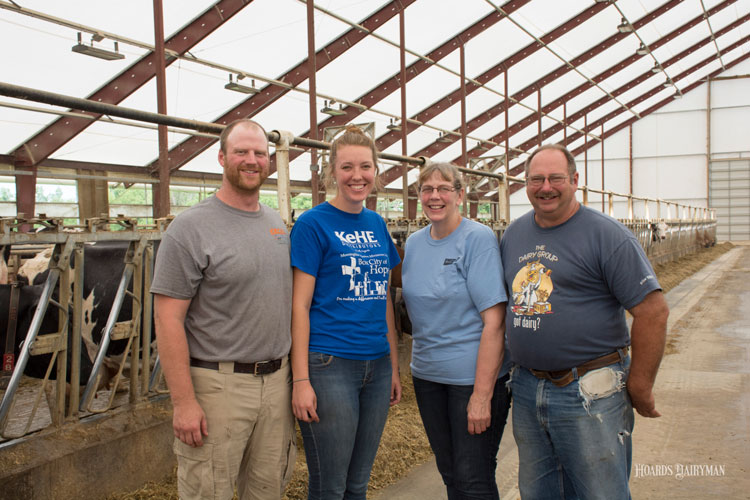
Most dairy producers invest in an automatic milking system to reduce the need for hired labor. As an added bonus, many herds milked with robots go up in production. This can be attributed at least in part to more frequent milking.
For the four farms featured in our Hoard’s Dairyman Round Table article, “These farms milk with robots,” they all cited calmer cows as a positive change after installing robotic milking as well. They also mentioned fewer sick cows as another benefit.
Considering the unique layout of robot barns, we asked these four farms from Illinois, Iowa, Michigan, and Oregon how they manage sick cows on their dairies when problems arise. We also wanted to know how they implemented footbaths, an important lameness prevention strategy.
Their answers to the questions are below. To learn more about these farms and their experience with robotic milking, take a look at the Round Table article in our January 25, 2018, issue of Hoard’s Dairyman beginning on page 46.
How do you care for sick or treated cows? Do you use footbaths?
Averill Farms, Tillamook, Ore.: We handle mastitis cows by setting traps in the robot and administering treatment off of that trap. If a cow is sick with something other than mastitis, we move the cow to our other farm (where cows are milked in a double-15 parallel parlor) and take care of the problem. We use copper sulfate formaldehyde in the automatic footbath three times a week.
Prime Land Farms, Harbor Beach, Mich.: With our crossbred cows, we really don’t have any sick or treated cows. If one needs special attention, it gets put in the maternity pen for a day. Everything is milked at the robot. We poured a 6-inch curb at one of our crosswalks to use as a footbath. This way, it’s away from everything. We run copper sulfate twice a week.
Van Veldhuizen Dairy, Rock Rapids, Iowa: We handle sick cows on a case-by-case basis. If they need to go to a bedded pack, they can go to an adjacent facility in which we milk them during our normal fetch time. We use footbaths in all of our pens.
Willow Valley, Kent, Ill.: We don’t have too many sick or treated animals, usually only one to two animals per our 170 milking cows. We have a bedded pack area with clean straw for fresh or sick animals. If a cow is treated, its milk is separated down the sewer to prevent bulk tank contamination. Depending on severity of sickness, the cow may be kept in a bedded pack or left out with the general population.
Footbaths are located on the east end of the barn in the alley crossover. We wanted to keep the copper sulfate as far away from the robots as possible. A plug is pulled and the old product is drained into barn cleaner chain, then new product is put into the footbath. Our hoof trimmer comes every six weeks for midlactation and dry-off trimming.








